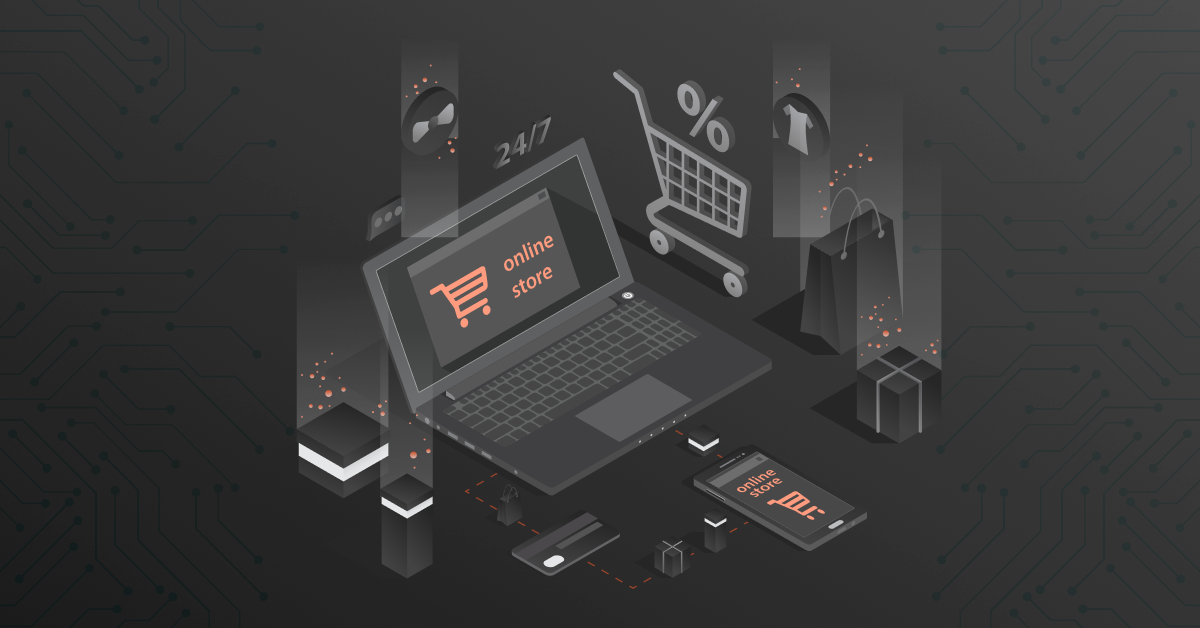Data is a touchpoint that attracts, retains, and navigates customers to make the right purchase decisions. How well you manage your product information determines your market value. In this eCommerce retail world, technology is a major driving force that connects your store with the target customers. Statistics confirm eCommerce will make up 22% of global retail sales by 2023.
Hence, this is the time to act smart and reap growth. Streamlining your operations is necessary to achieve your target. Data management is the crucial and most challenging part for every eCommerce retailer. Managing gazillions of data every day is a daunting task. Juggling product sheets might be holding you back. A Product Information Management (PIM) solution is necessary to fine-tune your product portfolio.

Recommended Reading: 8 Signs You Should Stop Using Spreadsheets for Product Data in 2021
Contents
5 Common Challenges Faced By Online Retailers
1. Rising Consumer Expectations
Customers are more aligned to eCommerce stores that provide a seamless shopping and unboxing experience. With new businesses emerging every day, customers have numerous options to shop from. For standing relevant and unique in the market, every store needs a technology-assisted product suite that streamlines faster access to the market and content management.
2. Proliferation of Multi-Channel Marketing
Social commerce has amped up the eCommerce sector by helping retailers sell directly to customers. Managing customer queries coming from different channels and distributing content across multiple channels is a daunting task. Manual content distribution and updates may increase errors when your SKU (Stock Keeping Unit) expands.
Recommended Reading: How to Get Multi Channel Marketing Right – Practical Tips
3. Increase in Global Level Competition
According to Oberlo, By 2025, it’s estimated that world retail eCommerce sales will exceed $7.3 trillion, and the overall eCommerce retail sales will hit 24.5 percent. Global market access, of course, will bring unlimited opportunities and profit to flourish, but optimizing language, currency, and data flow to meet global sales requirements is a challenge retailers need to overcome by choosing the best PIM solution.
4. Managing Product Returns
Insouciance in managing and curating product data is one of the reasons for the rising return rate. Inaccurate product data results in a bad customer experience. Customers won’t return to your store if your product content doesn’t match with the products. It directly affects your brand reputation. As inventories and catalog expands, retailers find it difficult to manage hundreds and thousands of SKUs.
5. Maintaining Relationship with Customers
Becoming your customers’ first choice and upkeeping the loyalty of customers is highly challenging. Providing a personalized value-driven experience is crucial to boost communication with customers. But, juggling product datasheets always pulls back retailers. Finding the right information and delivering relevant product data is a nightmare for some retailers
6 Reasons Why eCommerce Retailers Need a PIM Solution

Microsite development abstract concept vector illustration. Microsite web development, small internet site, graphic design service, landing page, software programming team abstract metaphor.
1. To Maintain Accuracy & Consistency in Product Data
Channel-specific data management is crucial to enrich product experience and curate customer-facing content. What if your website differ in style, tone, and brand messaging on different platform and devices. It affects your brand consistency.
A Product Information Management System (PIM) can provide a centralized data repository to collect, organize and distribute accurate and consistent data across multiple channels. You can include as many images, descriptions, and extended attributes to boost sales.
2. To Achieve Faster Market Access
Customers demand real-time solutions. Faster access to the market is an integral factor that determines your success. Real-time and automated updates across the channels are necessary to stay relevant in the market. How you respond to the competitive ecommerce market solution ECC determines your future in the eCommerce retail market. If you are still meddling with piled-up product sheets to govern your data, it’s high time to jump into a PIM solution. A robust PIM solution automates repetitive tasks and provides real-time updates by reducing the time needed to access the market. A single source of truth provides users across various departments equal access to edit and publish information.
3. To Optimize the Product Catalog
A content-driven product catalog mimics the in-store experience and influences consumers’ purchase decisions. When your business expands, it’s crucial to update your product catalog with brand new products. A retailer needs a robust product information system to optimize product catalogs according to the market demand. No matter how many categories and attributes you need to manage, a PIM seamlessly enhances your product catalog through hassle-free data import and export.
Read More: Product Catalog: The Gateway to eCommerce Success
4. To Streamline Seamless Data Integration & Upsell Products
Seamless data integration delivers consistency across channels. Moreover, it helps retailers provide customers with a contextual experience by suggesting relevant products that match their preferences. Real-time updates and solutions are necessary for retailers to upsell products to customers. The automation of repetitive tasks ensures a continuous flow of information to specific channels, thus helping the marketing and sales team to amplify value-driven services.
5. To Enrich Global & Local Sales
PIM solution provides retailers access to the global and local market by translating content accurately to influence customers who speak different languages. Moreover, PIM enables retailers to switch to different currency modes to increase customer experience and eliminate delays in conversion. Global scalability is a dream of every retailer. With a high-performing PIM tool, retailers can easily cross the boundaries of sales efficiently with zero hassles.
6. To Improve SEO Ranking
Nearly 93% of all web traffic comes through search engines. So optimizing your eCommerce store for search visibility is crucial to gain traction. A PIM tool helps to amp up your SEO strategy by providing keyword-rich content across different platforms. PIM’s data consistency ensures relevant content with popular keywords is distributed on all integrated platforms.

7 Features Every eCommerce Retailers Must Look In A PIM
1. Easy Digital Asset Management
Digital asset management is crucial for retailers who want to improve their brand presence, customer retention rate, and expand their customer base. A robust PIM solution should provide one-click digital asset management services to retailers. Visual content is an effective marketing solution. But managing creatives for 1000s of products and content is a daunting task.
Every retailer bootstrapping into an eCommerce business needs an efficient PIM system that facilitates digital asset management services. Small or large, be it B2B, B2C, or Direct-To-Consumer, visual narratives are vital for every business to improve engagement and influence purchase decisions.
As businesses grow, an unstructured database hinders operational efficiency and market access. Usually, retailers prefer third-party tools to upload and share digital assets. But, the risk of losing data is always a problem in third-party tools. In such worst scenarios, a PIM helps retailers:
- Publish directly on the desired channels
- Improve digital meta-data accuracy
- Maintain a single visual style on all channels
- Drive organic traffic through standardized metadata
- 360-view of all data in a single place
- Review and edit assets all-in-one platform
2. Simple Product Dashboard Analytics
Your PIM tool must provide a dashboard overview of the entire operations to help you compare and analyze the performance. You might be using multiple channels to accelerate your sale. A full-fledged PIM dashboard provides deep insight into various channels in a single place. It also provides you with a customizable widget on the dashboard to choose and edit the most important data.
3. User Role Customization
PIM is a tool accessed by different members of an organization. Employees from the sales team, marketing team, and different department levels use PIM for various purposes. In such cases, role-based customization is necessary to assign role-based permission to users. Custom role-based permission in PIM reduces hazards in the manual assignment of role-based tasks and saves time.
4. Bulk Edit & Built-In Connectors
Bulk operations are vital to accelerate performance and speed. Edit in one go helps retailers focus on business goals by reducing the time taken to edit multiple products across several fields, variants, and languages. Moreover, Built-in connectors in a PIM tool seamlessly integrate PIM with your ERP and eCommerce Store.
 5. Currency & Language Customizations
5. Currency & Language Customizations
A robust PIM should help you adapt product information to every market you are selling your product. This means changing language, currency mode, etc. to reflect the market necessity. Localization of products is always a challenge for retailers. Manual optimization takes time and increases the chances of errors. So a PIM solution must provide you with localization features to win the global market.
6. Product Categorization & Product relationship Management
Attributes and categories are crucial to help customers find the right match without browsing a lot. As the product catalog expands, it is vital to provide advanced filtering options to ease customers’ shopping journeys and introduce new products easily over time. Moreover, a well-built PIM tool should have the potential to set up a product relationship to provide value to your customers.
7. Interactive User Interface
Even a person with little or no training should be able to use a PIM tool. Easy access and straightforward design help retailers easily manage product information. So always make sure your PIM is less complicated and easy to use.
DCKAP PIM: The One-stop Solution for Retailers to Kickstart Digital Transformation
The onset of the pandemic has increased the market value for eCommerce. Digital transformation is no more a choice, but it is inevitable to succeed in the market race. From grocery to fashion, customers are inclined to eCommerce ores and contactless delivery. So, this is the right time to optimize your eCommerce journey with meaningful products suits.
The proliferation of IoT is revolutionizing commercial sectors. From commerce to eCommerce, the shift has brought massive opportunities for retailers to expand their customer base and communicate and sell beyond culture, language, and demographics. But the advancement came along with challenges. Managing online stores and the influx of data became a daunting task for retailers. Thankfully, the roll-out of PIM solutions has made eCommerce much more flexible and streamlined.
DCKAP PIM solution helps retailers fine-tune their eCommerce journey and influence customers’ purchase decision by providing shoppable content across omnichannel. Now you can easily organize your information and content in a centralized data repository. Reach out to our experts to catch up on more PIM stories and eCommerce success solutions.




